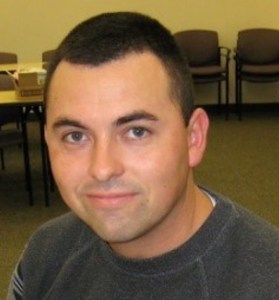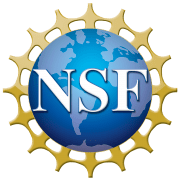NEW Training and Certification
HSI Program Awardees
NEW Resources
STEM Pedagogy Resources
–By Jorge Iniguez, PhD
As a result of Covid-19 pandemic, educators were suddenly faced with the challenge of how to continue their students’ education. While this might seem a daunting task, there are several ways educators can utilize the technology and resources already available to support best practices in STEM education. Under the leadership of Dr. Sonya Cooper and Dr. Jorge Iniguez, the HSI STEM Hub provides a STEM Pedagogy Resource page, which offers a repository of open access resources for teaching, learning, and faculty development.
- Online transition – There are resources to support the process of transitioning to the online learning environment.
- Online lectures – There is a list of media sources such as audio, video, and images to enhance your unique voice and teaching style.
- Online labs– Here you will find media sources such as audio, video, and images that can be used for interactive laboratory simulations.
- Online assessments – This section provides a list of resources to support better learning in an online context.
The HSI STEM Hub invites you to become a part of the HSI STEM Professionals Network (no membership fees) for access to resources for grantmanship, STEM pedagogy, multicultural awareness, institutional capacity building, and networking across the country for collaborative work in STEM: https://hsistemhub.org/join/.
 Jorge Iniguez, PhD
Jorge Iniguez, PhD
Dr. Jorge Iniguez earned a Ph.D. in Biological Sciences from UC Irvine, and an undergraduate degree in cell and molecular biology from California State University, Northridge (CSUN). Dr. Iniguez is improving student success by providing research opportunities at PCC. He has experience working with students from diverse backgrounds and is committed to providing equitable access for all students to achieve personal development, critical thinking, information literacy, and literacy competence.
Feature Columns
Inclusive CURE: An Innovative Way to Approach Undergraduate Research
–By Bernadette J. Connors, Ph. D., Dominican College of Blauvelt, Orangeburg, NY
More than ever, it is incumbent of us in academia to provide quality educational experiences that are equitable, inclusive, and just. As educators, we strive to create an atmosphere that fosters confidence and promotes student success while maintaining academic rigor for our diverse student populations. The meaningful implementation of an appropriate high-impact practice (HIP) in our classroom can do just that. Mentored undergraduate research is one such HIP that has a proven track record in enhancing deep and integrative learning and improving attitude [1]. Several studies have also shown undergraduate research can influence career choice and increase student interest in pursuing a graduate degree [2].
Various barriers to participating in independent research outside of the classroom, however, can significantly diminish the numbers of students who are able to benefit [3]. For instance, financial barriers may preclude some students from taking part if they have the need to work to finance their education or contribute to the family income. Additionally, at schools with few faculty who can dedicate time to research, the added burden of mentoring research students is not necessarily an option. Course-based undergraduate research experiences (CUREs) can provide an effective way to teach research skills to a large number of students, diversify the pursuit of scholarship, and equitably demonstrate the prospects awaiting them in graduate programs or in the job market.
Within a CURE, an entire class is involved in addressing a problem that is important to and yet unsolved by scholars in the field. Students become engaged in the scientific method, relying on the process of discovery, hypothesis generation, and iteration [4],[5]. Since the entire class is involved in this pursuit, not self-selected individuals involved in independent research projects, students have the potential to gain a sense for what it is like to work as a group toward a common goal, develop a sense of community, and participate in meaningful scholarship. This becomes especially important when they are suddenly isolated from their peers and learning in a virtual environment as a result of a natural disaster or public health crisis. For those who have significant personal or financial barriers, CUREs represent an important avenue to participate in research during both interrupted and traditional semesters.
The gains in critical thinking skills and abilities to network among a community of researchers are well documented for CUREs in STEM. Importantly, these gains exist for students across all demographics [6]. Although many STEM CUREs have been developed, fewer are found in other disciplines. This suggests that we in STEM reach out to our non-STEM colleagues to develop interdisciplinary CUREs, potentially benefitting students more broadly and across curricula. This will allow us to network within and across our community; discover novel avenues of research; and, once again, become invested in the creative and scholarly process. Not only do they serve our diverse students, but CUREs can serve our needs as well.
[1] Lopatto, D. (2010). Undergraduate research as a high-impact student experience. Peer Review, 12(2), 27.
[2] Russell, S. H., Hancock, M. P., & McCullough, J. (2007). Benefits of undergraduate research experiences.
[3] Bangera, G., & Brownell, S. E. (2014). Course-based undergraduate research experiences can make scientific research more inclusive. CBE—Life Sciences Education, 13(4), 602-606.
[4] CUREnet https://serc.carleton.edu/curenet/index.html
[5] Auchincloss, L. C., Laursen, S. L., Branchaw, J. L., Eagan, K., Graham, M., Hanauer, D. I., … & Towns, M. (2014). Assessment of course-based undergraduate research experiences: a meeting report.
[6] Hanauer, D. I., Graham, M. J., Betancur, L., Bobrownicki, A., Cresawn, S. G., Garlena, R. A., … & Jacobs, W. R. (2017). An inclusive Research Education Community (iREC): Impact of the SEA-PHAGES program on research outcomes and student learning. Proceedings of the National Academy of Sciences, 114(51), 13531-13536.

Bernadette J. Connors, Ph. D.
Bernadette Connors, Ph.D. is an undergraduate educator in biological sciences at Dominican College in Blauvelt, NY. Her research focuses primarily on understanding the microbial and viral ecosystems in numerous waterways in the Hudson Valley, focusing on identifying how human-related activities impact the dynamics of the aquatic microbiome. She welcomes both undergraduate and high school students into her lab, and has implemented course-based research experiences for both introductory and upper-level classes in Biology. Dr. Connors has secured funding through the NSF to support STEM scholarships for students entering biology professions and established numerous research collaborations for students.
The HSI Landscape
–By Margie Vela Ph. D.
Hispanic Serving Institutions (HIS) are designated by the U.S. Department of Education (DOE) based on two criteria (overly simplified for the purpose of this column): 1.) at least 25% Hispanic full-time undergraduate population; and 2.) at least 50% student population is Pell Grant eligible. This designation was formed in 1992, and since then the country has seen growth in Hispanic student enrollment in higher education (Figure 1), while also seeing steady growth in the K-12 population. The two criteria are currently met by 539 institutions that are designated by the DOE as HSIs, while the Hispanic Association of Colleges and Universities (HACU) has identified an additional 352 emerging HSIs[1]. Today, HSIs comprise 13% of all institutions of higher education in the U.S. and educate 2/3 of the total number of Hispanics enrolled in college[2]. These institutions are found in 37 states in the U.S., Puerto Rico, and Washington, D.C.2. The majority of HSIs are smaller institutions, serving under 2000 students2.
Educational attainment data by race is an indication that the role of HSIs and the intention of the designation to improve graduation rates for students attending HSIs is critical (see Figure 2.). From the data, we can infer there are opportunities for improving academic achievement throughout the education pipeline.
High school completion is one place for improving Latinx education rates. As grant writers design programs, this is one population that has the potential to be impacted through K-12-Higher Education partnerships. Other target populations are the Hispanic population that is 25+: 1.) and has completed high school but not attended college, and/or 2.) has attended but not completed college. Programs designed to recruit high school graduates into STEM disciplines for college and/or target re-entry and completion of 2- and 4-year degrees have the potential to positively impact up to 45% of the 25+ Hispanic population. Increasing completion of 2-year degrees and/or improving transfer rates for students who complete 2-year degrees is another opportunity for improving educational attainment for Hispanic students. Programs targeting 2-year degree completion, certificates, and successful college transfer can have a large impact on the pipeline of Hispanic students in higher education. And finally, improving the pipeline for bachelor’s, master’s, and doctoral degree attainment is critical to the success of Latinx students and STEM. Programs designed to support Latinx students for 4-year degree completion, and advanced and terminal degree completion can help to improve graduation rates and diversify industry, government, and education. Of equal importance are programs targeting career readiness for recent graduates at every level.
There are successful models in many disciplines working towards these goals. Grantwriters have the opportunity to adapt successful models to meet their institution’s and student population’s unique needs. Additionally, program design can incorporate more than one approach or intervention for providing students with robust academic support systems and educational opportunities that meet their needs. Moreover, grant writers can form unique interventions through partnerships across institutions. As grant writers form partnerships and collaborations with HSIs across the country, it would prove beneficial to understand the HSI landscape. Excelencia in Education provides resources for understanding this landscape and has reported the following top 5 HSIs by characteristic:
Grant writing is a powerful tool for affecting change. Partnership to advance student success is also of utmost importance. As you navigate this space, your work changes outcomes for students, their families, and the Latinx community.
[1] Hispanic Association of Colleges and Universities, (2018). HACU List of Hispanic Serving Institutions. Retrieved from: https://www.hacu.net/hacu/HSIs.asp
[2] Lee, S. (2020). Hispanic Serving Institutions: History, Resources & A Look at Top HIS Colleges. Retrieved from: https://www.affordablecollegesonline.org/college-resource-center/hispanic-serving-institutions/

Margie Vela, Ph. D.
Margie Vela holds a Ph. D. in Water Science and Management from New Mexico State University and is a USDA NIFA Fellow. Dr. Vela has devoted her career to diversifying STEM through supporting and training underserved students. Her contributions to broadening participation of underrepresented groups in STEM include serving Delaware State University as the Assistant Director for the Science and Mathematics Initiative for Learning Enrichment; performing analysis on broader impacts as a National Science Foundation Summer Scholar; and serving Child, Youth, and School Services for Fort Lee, Virginia as the Project Director for the HIRED! Program. She has also designed and lead workshops for college students and researchers on various topics including interdisciplinary research, complex socio-environmental problems, and college success. As a researcher, Dr. Vela has successfully engaged community-based research focused on the relationships of water inequity and educational attainment for communities on the Southern U.S. Border while mentoring and supporting three undergraduate researchers during her doctoral studies. Margie has served as a USAID volunteer consultant for rural organic farmers in Colombia for water use and organizational development.
HSI in the News
How Research Opportunities for Undergrads Can Change Lives
-By Dr. Erika Tatiana Camacho, Program Officer, U.S. National Science Foundation (NSF) – Published in ModernWellnessGuide.com
I’m a Mexican immigrant. I moved to the United States when I was eight years old. My parents worked hard and my three older siblings dropped out of high school to help make ends meet. My community of East Los Angeles was a place where there was a lot of poverty and shootings …










